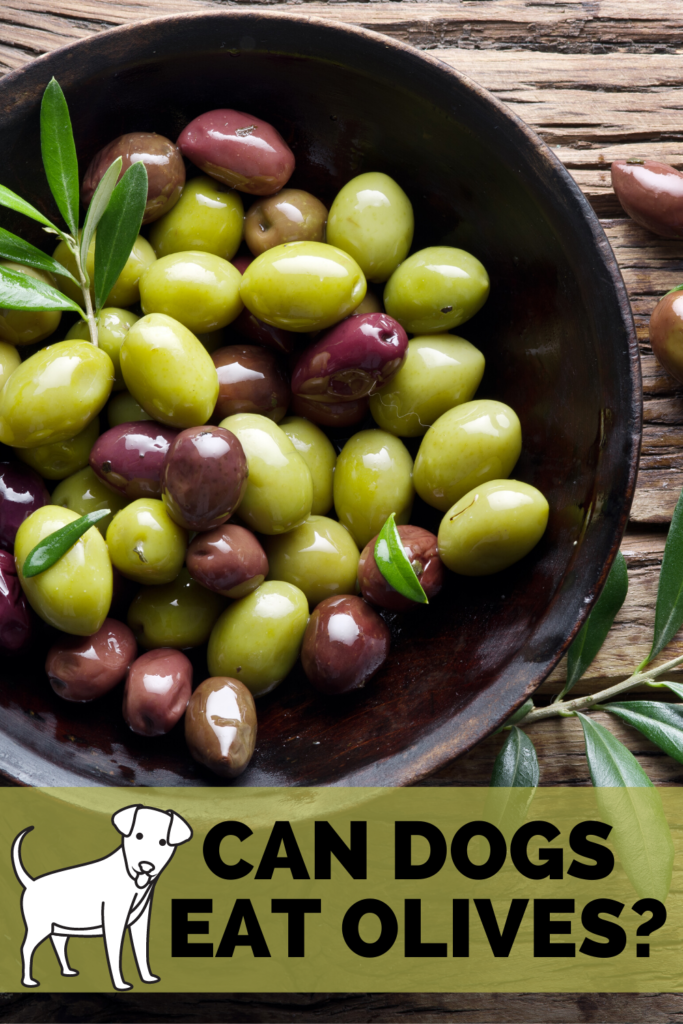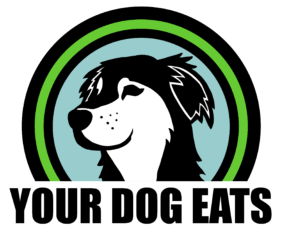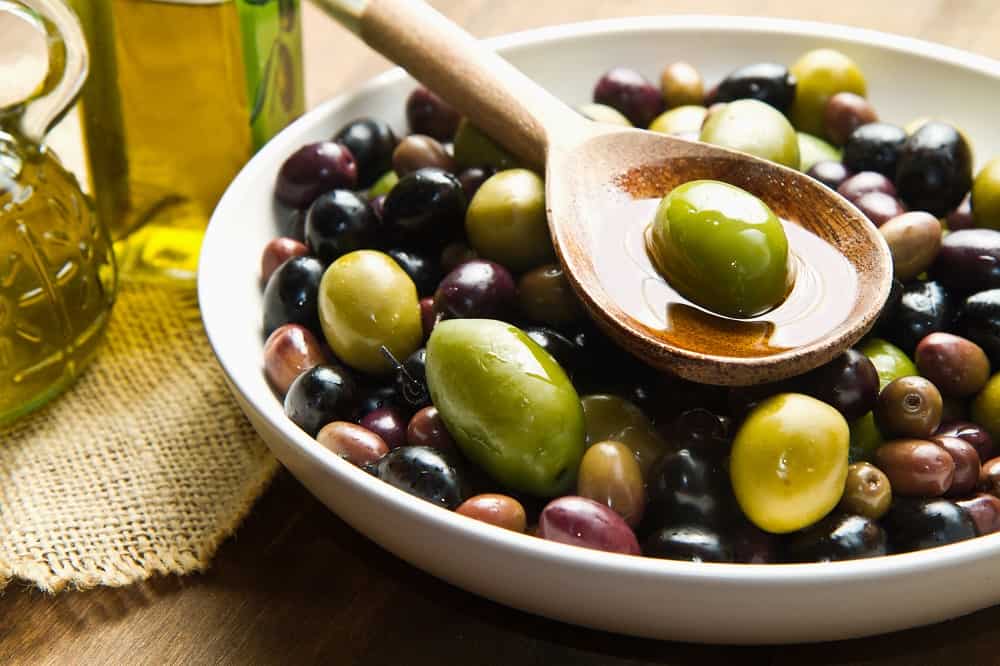Whether your pup just climbed up and grabbed a bite of an olive off your salad, or you’re simply curious about dog nutrition – you might be wondering, can a dog eat olives? For the most part, the answer is yes. A couple olives are likely harmless for your furry friend. However, there are a few risks to consider before serving up more.
This post was reviewed for veterinary accuracy by Cara Wright, DVM. For more information about our review process and Cara, please visit the About Us page.
Can Dogs Eat Olives with Pits?
You can purchase olives at the store that are either pitted, or sold with pits. Because the pits are hard, they can present a choking risk for your dog. This is more likely if your dog is a smaller breed, or has a tendency to scarf down food quickly – but can happen to any dog.
Along the same lines, even if they did not choke on the pits, eating too many olives with pits may cause digestive upset. In severe cases, a ton of pits could cause a digestive blockage.
Can Dogs Eat Pitted Olives?
Pitted olives are an easy way to avoid the risk of pits. Plain, low sodium, pitted olives are fine for your dog to enjoy as an occasional treat, or if they happened to hop up to the table and snag a few by accident.
Olives themselves offer a few nutrition benefits – for example, they are high in Vitamin E.
Some research suggests dogs with atopic dermatitis (an itchy skin condition) may suffer from lower plasma Vitamin E levels (source). Other research suggests Vitamin E supplementation may benefit dogs with the same condition (source).
Now, the amount of clinical supplementation to achieve such results is much higher than is in a few olives (and is conducted under a vet’s supervision!), but it’s still interesting to consider some of the benefits of Vitamin E overall for dogs.
Olives are also a good source of monounsaturated fats. Anecdotally, some people claim the healthy fats in olives could help with your dog’s skin and coat. And it’s true that a very low-fat diet could cause dogs to develop coarse and dry hair (though it’s unlikely a few olives would solve this problem). Most commercial dog foods are formulated with the correct amount of nutrients including fat, and should support your dog’s coat.
All this said, there are still a few situations where you may want to exercise caution, even with pitted olives, which are described below.
Risks of Too Many Salted Olives for Dogs
Many olives are salted, and too much sodium is not ideal for your dog.
However, true hypernatremia – in which there are excessive sodium levels in the blog – is pretty rare among dogs. This is more commonly associated with fluid losses rather than excess sodium intake, though it can occasionally occur if a dog consumes a lot of cooking salt, rock salt, homemade play dough, or another extremely high sodium source.
If you have a small dog that somehow got into a large quantity of salted olives, it may be worthwhile to keep an eye on their behavior (and of course, call your vet to double check). Signs of salt poisoning can include gastrointestinal upset like vomiting and diarrhea, and further progression to hypernatremia can include depression, lethargy, tense muscles, frequent urination, seizures, or other severe symptoms.
For example, a 5-1/2 ounce container of Spanish cocktail olives contains about 2400 mg of sodium total in the container – or about 2.4 grams. According to the textbook Small Animal Toxicology, signs of salt toxicity can occur as low as 2 grams per kilogram (2.2 pounds).
So if you had a small dog breed like a Maltese or a Pomeranian, especially if the dog was on the lower end of the normal weight range or was just a puppy, and somehow they managed to down an entire jar of olives – that would be reason to be concerned.
For a large dog, though, even that amount is likely not going to be harmful as far as salt poisoning goes.
Still, it’s wise not to give your dog too many salty snacks.

Consider Other Harmful Ingredients
When it comes to the question of can a dog eat olives, you’ll also want to consider how the olives are served. Many dishes may include olives that are tossed in oil or butter, garlic, and seasonings. Several of these ingredients can be problematic. Too many fatty oils can give your dog an upset stomach. And you never want to feed garlic or onions to dogs, as these are toxic and can cause significant health problems.
Similarly, olives are often found in alcoholic drinks like martinis. While I’m sure you’d never think about letting your dog sip on your drink, it’s important to know that the fruit can absorb some of the alcohol. As such, it’s wise to skip giving your dog any olives that were in an alcoholic drink.
According to the textbook Small Animal Toxicology, if your dog accidentally consumes too much alcohol, they can experience symptoms like lethargy, sleepiness, hypothermia, poor coordination, or other concerning side effects. Call your veterinarian if you think your dog has accidentally consumed alcohol, even if it was a small amount, and they should be able to guide you on whether monitoring will suffice or an office visit is needed.
What about Green vs. Black Olives?
The only real difference between green and black olives is ripeness. Green olives are picked before they are ripe, while black olives are picked when fully ripened. Nutritionally, they are pretty equivalent to one and other – so a few of either should be fine provided all the guidelines above are considered.
A Final Word from Your Dog Eats
As you can see, a few pitted olives should not be harmful for your canine pal. Keep in mind the precautions above though.
This information is provided for informational purposes only. Remember, always contact your veterinarian if you have any concerns over your pet’s health and nutritional needs.
Be sure to pin this page to refer to later! 🙂


